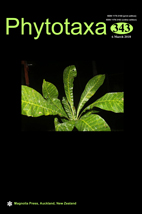Abstract
Archiclematis and Naravelia were considered to be two small genera closely related to the large cosmopolitan genus Clematis. They have been included into Clematis s.l. in recent years according to molecular phylogenetic evidence. There is still little genomic information available for Archiclematis and Naravelia species. In this study, six complete chloroplast genomes from Archiclematis, Naravelia and Clematis were reported based on Illumina sequencing. The gene order and organization of the chloroplast genomes of Archiclematis and Naravelia are the same with that of Clematis. Analysis of eight complete chloroplast genomes showed that the plastomes of Clematis s.l. are typically circular, with a total length ranging from 159,513 bp to 159,783 bp. The total number of genes is identical within the broadly defined genus Clematis. We also identified variation hotspots, plastid repeats and SSRs for Clematis s.l. species. Our plastid phylogenomic analyses recovered the inclusion of Archiclematis and Naravelia into Clematis. The present study provides important phylogenomic data of Ranunculaceae and illuminates the phylogenetic relationships among Clematis species.

